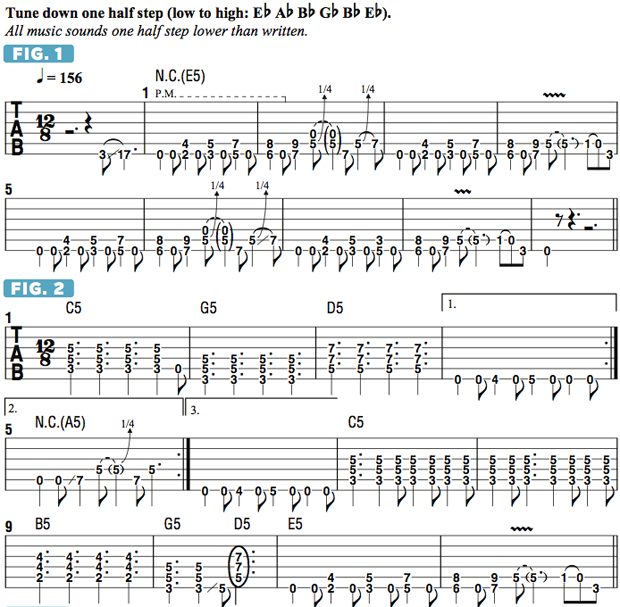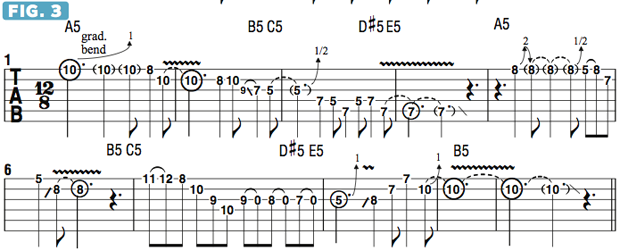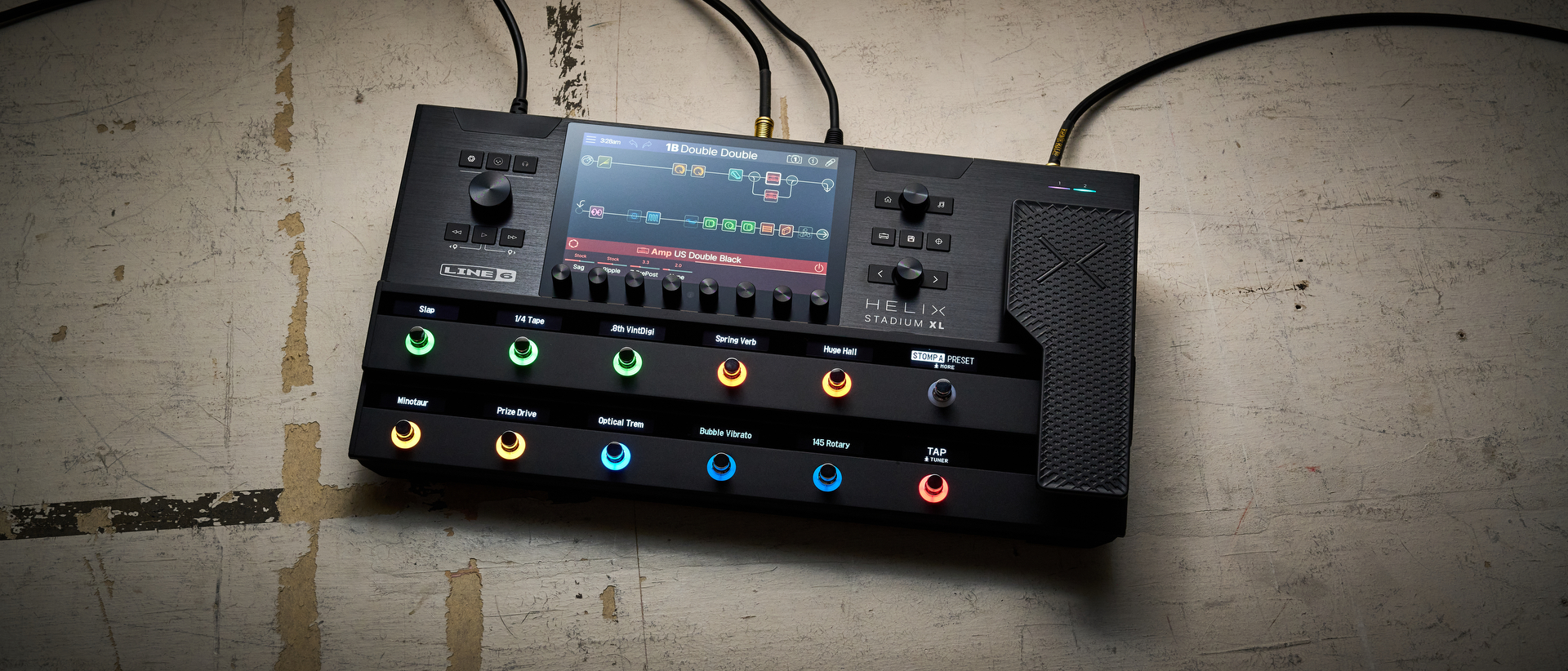Man of Steel with Steel Panther's Satchel: How to Play the Bridge and Guitar Solo from “Gang Bang at the Old Folk’s Home”

Hey! Satchel here, with part two of our look at the Steel Panther classic, “Gang Bang at the Old Folk’s Home,” from our latest release, All You Can Eat.
It never gets old, does it? I mean, it does get old, no pun intended, but no matter how old it gets, it’s still fun—that’s what I’m trying to say! This month we are going to examine the bitchin’ bridge and solo sections of this bitchin’ song.
As opposed to the all-downstroked verse section, the bridge section, illustrated in FIGURE 1, is very strummy in that it is played with a basic strum pattern of steady 16th notes performed with alternate (down-up) picking.
In this figure, I switch between bars of steadily strummed 16th notes and bars with either sparse chordal hits or combinations of two-note chords and single notes, which balance well against the feel of the steadily strummed chords. Notice in particular the fast pull-off riff in bar 4. Fretting with the ring and index fingers, I repeatedly pull off from the fourth fret to the second fret and then to the open string across the third, fourth and fifth strings before moving back into power-chord accents.
At 14 bars, this figure is relatively long, and bars 9–14 represent the rhythm part I play underneath the guitar solo. Including the first and second endings, this part works out to be eight bars long (the last chord, B5, actually is sustained through the ninth bar and final bar of the solo section). The bridge section is played in the key of A, and the latter part of the figure, starting at F#5 and used for the guitar solo, represents a shift to the key of F# minor, the relative minor key of A major.
FIGURE 2 depicts the guitar solo played over bars 9–14. For the solo licks, I rely primarily on the F# minor pentatonic scale (F# A B C# E) in bars 1–7. Keep in mind that these notes also comprise the A major pentatonic scale (A B C# E F#), the five-tone scale associated with the relative major chord of F# minor, A major.
I actually did not play this solo on the record. (I know, it’s the best solo on the record, and it’s the only one I didn’t play!) We were very fortunate to have the great Vivian Campbell of Def Leppard come into the studio and record the guitar solo for the track. But I do perform the solo live, and the example shown here represents my take on Viv’s approach. I begin with whole-step bends on the G string and dig in with the pick hand, getting the edge of the thumb into the attack in order to attain a series of pinch harmonics (P.H.).
All the latest guitar news, interviews, lessons, reviews, deals and more, direct to your inbox!
In bars 1–3, I simply move freely through F# minor pentatonic in second through fifth positions, and I end the phrase in bar 3 by sounding the flatted fifth, C, which is heavily vibrato-ed. Bar 5 is made up of an octave-based pattern between two F# notes on the third and first strings, after which the lower F# alternates against descending higher notes. The solo ends with sliding two-note forms sixths apart, fretted on the D and B strings and decorated with some whammy bar dips.


Satchel is the guitarist for Eighties-inspired glam-metal act Steel Panther. Their latest albums is 2014's All You Can Eat.
